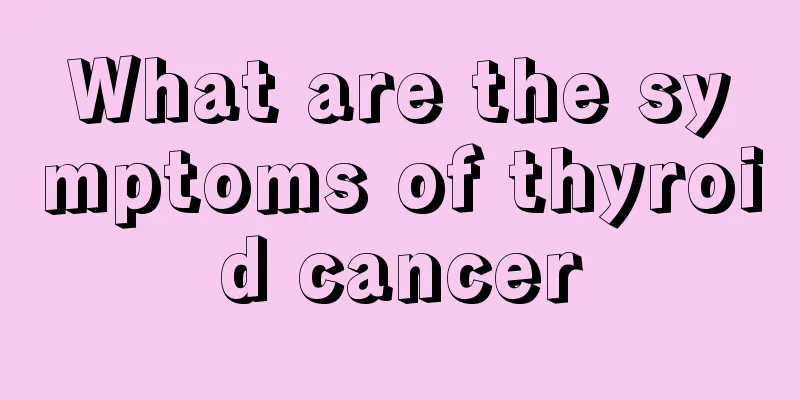What are the symptoms of papillitis?

|
Patients with optic papillitis will suddenly experience blurred vision, and some patients will experience dizziness and headaches. It is necessary to find the cause in time and then treat it symptomatically. They should also pay attention to their diet and eat more foods high in vitamin A. 1. Symptoms and Signs 1. Symptoms Most patients have sudden blurred vision in both eyes (a few may have unilateral vision), with severe visual impairment within one or two days, or even complete loss of light perception. At the same time or before the onset of the disease, the swelling of the optic nerve may affect the muscle sheath of the eye muscle near the muscle cone, causing a feeling of distension and pain behind the eyeball or distension and pain behind the eyeball when the eyeball moves. A small number of patients experience headache and dizziness, but most do not experience nausea or vomiting. 2. Physical signs: The external eyes are generally normal, but the pupils are dilated to varying degrees. For those with no light perception in both eyes, the direct and indirect light reflexes of the pupils completely disappear. For those with severe visual impairment, the light reflex of the pupils is significantly weakened or dull. In monocular patients, the affected pupil may have a relative afferent pupillary defect (Marcus Gunn sign). 3. Fundus examination: The optic disc is congested and the borders are blurred, followed by optic disc edema. However, the degree of edema is generally mild, with the degree of protrusion usually not exceeding 2 to 3 diopters, and there is also edema in the retina around the optic disc. The retinal veins are filled and varicose, and there are generally no obvious changes in the arteries. Sometimes a few small flame-shaped hemorrhages can be seen around the optic disc, with less exudation. In some patients, the edema is not limited to the optic disc and the surrounding retina. The entire posterior pole of the fundus has obvious edema, which appears grayish white and has enhanced reflection. This is called neuroretinitis. Some patients have some inflammatory cells near the optic disc or in the posterior vitreous at the posterior pole of the fundus. In the late stage when the optic nerve undergoes secondary atrophy, the optic disc becomes lighter in color, the arteries become thinner, and pigmentation may occur on the retina. These changes may begin 2 to 3 weeks after onset of the disease. 2. Diet and Health Care In terms of food, you should eat more lean meat, poultry, animal offal, fish, shrimp, milk, eggs, beans, etc., which are rich in protein. Protein is the main component of cells. The repair and renewal of tissues requires constant supplementation of protein. Foods containing vitamin A are also good for the eyes. When vitamin A is lacking, the eyes' ability to adapt to dark environments is reduced, and in severe cases, it is easy to suffer from sleepwalking. Vitamin A can also prevent and treat dry eyes. When there is a long-term lack of vitamin A, it can eliminate eye fatigue. Sufficient vitamin A should be consumed every day. The best sources of vitamin A are the livers of various animals, cod liver oil, milk and eggs, plant foods such as carrots, amaranth, spinach, leeks, green peppers, sweet potatoes, and fruits such as oranges, apricots, persimmons, etc. Foods containing vitamin C are also good for the eyes. Vitamin C is one of the components of the lens of the eye. If you lack vitamin C, you are prone to cataracts, which is a disease in which the lens becomes cloudy. Rich in calcium powder is also good for the eyes, as calcium can eliminate eye strain. For example, beans, green leafy vegetables and dried shrimps are rich in calcium. Cooking methods such as roasted pork ribs soup, sweet and sour pork ribs with cod can increase the calcium content. 3. Medication The treatment of optic discitis is mainly to eliminate the cause, and timely and rapid administration of large doses of corticosteroids, large doses of B vitamins and vasodilators can often achieve good results. However, many patients can recover on their own 2 to 6 weeks after onset, even without any treatment, and their vision can return to normal. Therefore, caution should be exercised when interpreting therapeutic effects. Through statistics and long-term follow-up of a large number of cases in multiple centers abroad, it is believed that there is no difference in the long-term efficacy of optic neuritis regardless of whether it is treated or not. Therefore, many doctors abroad do not prescribe any drugs for optic discitis. If medication is needed, methylprednisolone 1g/d is given intravenously for 3 consecutive days, and then changed to oral prednisone 1mg/(kg·d) for 11 consecutive days. |
<<: Can frozen swimming crabs be eaten? How to eat it tastes good
>>: The efficacy and function of Anemarrhena asphodeloides, giving you the most complete analysis
Recommend
What is the reason why fat women have too much water?
The reason why fat women have too much water may ...
What are brown patches on the skin?
For human skin, we don't require it to be as ...
What should I do if I find out that I added too much alkali after the rice dumplings are cooked?
Zongzi is a must-have for our traditional festiva...
Analyzing the three major causes of female breast cancer that cannot be ignored
Breast cancer is a common tumor disease that occu...
How to make delicious and simple mushrooms
Shiitake mushrooms are a low-fat, high-protein ed...
7 Reasons Why You Must Eat Garlic
If the smell of garlic could be ignored, it would...
Does slow brain reaction mean low IQ?
Many people like to use the speed of brain reacti...
Does nasopharyngeal cancer cause swallowing pain?
Does nasopharyngeal cancer cause swallowing pain?...
Can cucumber water be used as toner?
Many women know that cucumbers have the effect of...
Fruit collection for skin tumor diet
The secret to preventing skin tumors is very simp...
Cost of mid-term chemotherapy for ovarian cancer
If ovarian cancer chemotherapy is performed in a ...
What Chinese medicine is good for treating nasopharyngeal cancer and what diet should be followed?
If nasopharyngeal cancer is not treated in time, ...
What are the nursing measures for lung cancer? 4 common nursing methods for lung cancer
Many people know the harm of lung cancer. In rece...
How to cool down a room quickly?
Summer is a relatively hot season, and it is easy...
What to do with rheumatoid joint pain? It turns out there are 4 ways to relieve it
Rheumatoid arthritis is a common disease in daily...









